Case Studies.
Add Case Study
Our Case Study database tracks 22,657 case studies in the global enterprise technology ecosystem.
Filters allow you to explore case studies quickly and efficiently.
Download Excel
Filters
-
(407)
- (253)
- (84)
- (60)
- View all
-
(324)
- (201)
- (103)
- (25)
- View all
-
(265)
- (139)
- (39)
- (31)
- View all
-
(263)
- (120)
- (84)
- (74)
- View all
-
(251)
- (212)
- (70)
- (32)
- View all
- View all 13 Technologies
- (159)
- (114)
- (103)
- (101)
- (98)
- View all 42 Industries
- (1,315)
- (322)
- (154)
- (138)
- (124)
- View all 13 Functional Areas
- (558)
- (433)
- (294)
- (182)
- (153)
- View all 71 Use Cases
- (915)
- (405)
- (380)
- (231)
- (78)
- View all 8 Services
- (64)
- (64)
- (64)
- (51)
- (44)
- View all 191 Suppliers
Selected Filters

|
Apply Sørco Achieves 30% Efficiency Gain Thanks to Enhanced Technology Adoption
Apply Sørco, a Norwegian engineering company, faced challenges in winning new contracts due to the existing time-consuming training process and the excessive amount of administrative work. Major clients demanded substantially lower costs, putting pressure on the company to reduce their prices and spend fewer man-hours per task. The company's major clients on the Norwegian continental shelf mandate their subcontractors to deliver data and information using AVEVA software, and the deliverables vary from client to client. The integration of these was not optimal, as it required numerous mouse-clicks, and the engineers had to switch between different software packages.
|
|
|

|
Essential Nutriments to Save Lives Made Possible by AVEVA
Baxter S.A., a global diversified healthcare company, needed to revise its manufacturing facility processes to incorporate automation methods into a new production line. The new automation system needed to assist Baxter in achieving U.S. Food and Drug Administration (FDA) 21 CFR Part 11 compliance regulations. The automation system selected for the new Baxter production line had to be fully compatible with Baxter’s existing architecture and systems. The company required that the new system integrate Profibus-connected smart sensors into the new manufacturing line process. Production management had to be centralised and include reporting, analysis, traceability and performance monitoring to adhere to FDA 21 CFR Part 11 regulations as well as European compliance standards.
|
|
|

|
MMG Generates Large Returns by Focusing on Continuous Improvement
MMG Limited, a global mining company, was seeking to implement a standardised Asset Utilisation solution across all its operational sites. The solution needed to be flexible enough to adapt to the local operating conditions of each mine, while also providing a standardised asset utilisation data that they could analyse in real-time. The company wanted to have the capability to drill-down to the root-cause of any equipment asset that was exhibiting less than perfect utilisation, in order to drive continuous improvement through the business. The new system and processes had to be readily accepted by users everywhere, and this had to be achieved in a single sign-on environment compatible with existing systems.
|
|
|

|
Optimization System Increases Profitability of Southern Mississippi Electric Power Association
The Southern Mississippi Electric Power Association (SMEPA) was facing a challenge of improving the heat rate and boiler efficiency while maintaining low NOx emissions at their R.D. Morrow Generating Station. The station utilizes two parallel boiler-turbine units with a capacity of 204 MW at 2400 psig. The fuel is pulverized coal from three Riley doubleend ball tube mills fed by six Stock Gravimetric feeders. The objective was to determine the most profitable operating point for the boiler and mills, as defined by a set of values for the controlled and manipulated variables in the process model.
|
|
|
|
|
MES to Standardize Wafer Epitaxial Operations
GS-EPI, a provider of professional silicon epitaxial wafer (Epi) OEM services, was facing a growing challenge. The company manufactures more than 200,000 6” EPI wafers per month on three types of equipment and the volume was growing. Historically, GS-EPI collected production data, recorded it on paper and put it into Excel spreadsheets. Querying production data was very difficult and in some cases, it was impossible to find the correct set of data from the past. To win customers, GS-EPI has to explain how they manage the production process, how they control quality and how they achieve wafer traceability. Their critical customers demanded that they implement an MES system. At the same time, managers knew that they needed a tool to help manage production efficiently to meet the increasing number of orders they were getting.
|
|
|
|
|
An Integrated Approach to Traceability for a Fresh Start
AT&S, a leader in the high-end printed circuit board (PCB) market, was building a new plant in China to manufacture integrated circuit (IC) substrates. They recognized that their new substrate production facility would need effective automated information flows to handle all of the data for their products. The systems in place in their six existing PCB production facilities were not adequate. These systems presented two related business challenges: efficiency of data collection and access to data about products and processes, and changing traceability requirements that require agility to revamp information sets. The current application set also presented some IT challenges. Other AT&S plants had an array of systems providing MES capabilities. These included commercial applications from the ERP provider, some applications developed on IBM Notes and homegrown software.
|
|
|
|
|
Auto Components Growth Drives to MES with a Future
Yazaki Saltano, a molded plastic parts supplier in Portugal, was facing challenges in managing its high-volume molding operation with paper records and Excel. The company was planning to add many more molding machines and realized that it needed a more robust control system. A previous attempt to implement a Manufacturing Execution System (MES) had failed due to unreliable communication between the molding machines and the MES. This, coupled with plans to add even more machines, created a strong incentive for Yazaki Saltano to choose the right partner and succeed with the MES implementation.
|
|
|

|
ComfortFit Labs: Digital Transformation with FactoryFour
ComfortFit Labs, a New Jersey-based packaging manufacturer that designs and manufactures custom orthotics, was facing a challenge with their traditional order processing workflow. The process was tedious, involving significant manual labor and long turnaround times. Customers would send plaster casts of their patients’ limbs along with paper order forms to ComfortFit. The order data was recorded manually, and when a work order was issued to the floor, technicians had to manually measure the cast and find the right mold out of hundreds to manufacture from. This resulted in an average 7–20 day turnaround time with a process that was prone to human error from order entry.
|
|
|

|
Comprehensive P&O
Comprehensive Prosthetics & Orthotics (CPO) was facing challenges with their order processing and manufacturing workflow. The company's clinicians were sending plaster casts and clay impressions along with paper forms to their central fabrication facilities. This process often involved back-and-forth calls to rectify errors or clarify details. The order data was then manually transcribed and issued to the floor as a paper work order. During production, a job traveler moved through each work center, and technicians referenced the paper work orders for fabrication. Whenever a customer called with an order inquiry, it required a tedious process of going to the floor, locating the job traveler, and relaying the order status back to the customer. CPO needed a solution that would connect their clinics directly to the manufacturing floor, providing immediate visibility for customers and managers while streamlining the process for their technicians.
|
|
|

|
Deliver Results in Productivity. AUDI AG
Audi, a pioneering car manufacturer, operates press plants in Ingolstadt and Neckarsulm, Germany. The automotive industry has seen significant changes over the years, with niche products becoming increasingly important. To remain competitive, Audi needed to respond instantly to specific customer requests. The range of models available from Audi has increased, which has implications for the manufacturing of car body panels. It requires the production of more sophisticated pressed parts, involving the use of a wide range of tooling. This necessitates creating capacities and improving the efficiency and performance of the press plants. More than 1,500 employees work with state-of-the-art press machinery at Audi's plants. The independent subdivision is responsible for the distinctive Audi design in aluminium and steel, making it one of the most efficient plants in the whole company.
|
|
|

|
Achieve Increased Productivity Through Transparency
The manufacturing industry is facing an abundance of complexity, which becomes more apparent with frequent product innovation and shorter product life cycles. Digitization and the ability to access information from anywhere and at any time are changing the rules in almost all sectors. Manufacturers must accelerate production cycles and distributors must shorten delivery times. In response to changing dynamics involving savvy consumer expectations, time to market, and intense global competition coupled with the Internet of Things and mobile technologies, the entire supply chain ecosystem is undergoing a vast transformation. With the many meanings of digital transformation at innovative companies, to remain competitive means to uncover potential for increased productivity and to unleash the hidden factory. Hard facts from machine data must be accessed, understood, and evaluated for effective intervention.
|
|
|
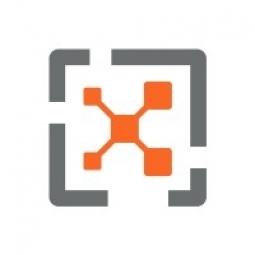
|
SaaS Provider Transforms Security Automation in New Data Center with Illumio
A Fortune 1000 enterprise SaaS provider sought to secure a new greenfield data center without restricting application traffic for its automated compute environment. The stakes and costs for a new data center were high. Complex automation was critical to this SaaS provider’s current and future plans, including public cloud. In automated environments, DevOps cannot accept any solution that breaks automation or slows down their work, which is essential to keeping billions of dollars of revenue flowing. Customer SLAs (spelled out in contracts) cannot be violated without financial penalty. This created tension between automation and contractual obligations. Security architects needed to transform an operationally unsustainable system – one that required supporting five different segmentation solutions including firewalls, Calico, VMware NSX, and switches. Every time the organization adopted a new technology, they adopted a new segmentation solution, which made them have to build their own backend to synchronize all of the different solutions. This created security sprawl.
|
|
|

|
Ixom Achieves Secure Segmentation Across Environments with Illumio
Ixom, a leading industrial chemical manufacturer based in Melbourne, faced multiple IT challenges securing legacy applications that require unsupported platforms for continued operations, as well as the desire to network harden critical IT infrastructure to decrease the risk from vulnerabilities. With a portfolio of global businesses across geographies, cloud infrastructure was critical to gaining efficiencies. Yet governing cloud environments posed its own security challenges. A transition from Multi-Protocol Label Switching (MPLS) routing to a Software Defined Wide Area Network (SD-WAN) allowed Ixom’s core IT team to decouple controls from the network for more agility and effectiveness. Adopting a Zero Trust security approach, they sought a whitelisting solution to limit exposure by preventing unauthorized access to any system. But manual methods proved untenable, both to architect and maintain.
|
|
|
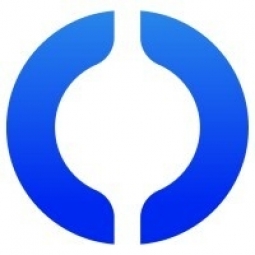
|
Fishbowl Generates Powerful, Userfriendly Inventory Control Solution for Industrial Engine Remanufacturer, Industrial Engine Service
Industrial Engine Service (IES) was struggling with a legacy inventory system that was riddled with errors and required numerous workarounds. The company was frequently losing and mismanaging parts, and employees found it difficult to keep track of all the separate parts going into each project. The old DOS system was confusing for many employees and processes were not under sufficient control. IES recognized that to compete at the level they wanted, they needed more control over their inventory and manufacturing processes. However, their complex processes couldn't be handled by a simple inventory system.
|
|
|

|
Niche Bakers Corp. Rises to the Challenge of New Products and Customers with Fishbowl's Sweet Business Automation Platform
Niche Bakers Corp., a Canadian bakery, was facing a challenge of tracking individual ingredients and orders due to its rapidly growing product range. The company had to trace every ingredient put into a product for quality assurance purposes. When a supplier reported an issue with a lot of product, the company had to be able to find that within minutes. The company's products had become quite complex to track as they expanded from cookies to cakes, bars, haystacks, and different products.
|
|
|

|
Crossroad Distributor Source Fishbowl Manufacturing Solution
In 2008, Crossroad Distributor Source (CDS) realized that it was outgrowing QuickBooks as an inventory management solution. The company needed distribution centers in other cities, and QuickBooks as a standalone was not an option. Other issues were identified, such as customer- and volume-specific pricing models, key performance indicators, such as on-time delivery, fill rate, and traceability recordkeeping that had to be satisfied. Additionally, CDS had made a decision to bring in house all of its kit assembly, and needed a robust software package to address all these concerns. The biggest challenge was cost. Many of the accounting and inventory management software systems used in the industry were costly, often costing a minimum of $15,000 before you actually got what you wanted. At this point in the young company’s history, that sort of expenditure was impractical.
|
|
|
_30.jpg)
|
Panama Minimizes Imbalance Penalties with Power Forecasting
Panama Group, a power generation company based in India, was faced with the challenge of meeting India's Renewable Regulatory Fund (RRF) regulatory requirements. The company needed to determine the quality and resolution of weather data for forecast accuracy. However, they were dealing with unreliable site connectivity, which made it difficult to manage turbine data availability and gain closed-loop control. The challenge was to find a solution that could address these issues and help the company meet its regulatory requirements.
|
|
|

|
Enhancing Supply Chain Visibility and Efficiency with o9’s Advanced Control Tower
The manufacturer of heating, ventilating, and air conditioning (HVAC) systems and building management systems and controls was facing significant challenges in its supply chain management. The company was struggling with large delays in replanning for any delay in the supply of critical components, which was causing disruptions in production and customer order fulfillment. Additionally, the company had limited visibility into the supply chain disruptions of its Tier 1 and Tier 2 suppliers, which further complicated the situation. The company was also unable to effectively analyze alternative scenarios to mitigate supply disruptions, which was a significant challenge in the face of events like the COVID-19 pandemic that caused widespread supply chain disruptions.
|
|
|

|
Digital Transformation in Cargo Handling: A Case Study on Forecasting and Planning Capabilities Enhancement
The case study revolves around a leading provider of cargo and load handling solutions aiming to become a leader in sustainable and intelligent cargo handling. The company embarked on a global initiative to implement digital transformation throughout their end-to-end supply chain to drive efficiency, focusing on speed, automation, real-time data, and transparency. However, they faced significant challenges in their business scope. Firstly, they lacked proper forecasting capabilities, relying heavily on their order book for decision-making. Secondly, their configure-to-order business model resulted in a sales cycle varying between 3 to 6 months, with the order-to-delivery time between 2 to 4 months. The company aimed to reduce this lead time to increase customer satisfaction. Lastly, the absence of planning tools led to issues with the finance team, who could not comprehensively view the order lifecycle and the associated revenues.
|
|
|

|
Swiss Insurer Safeguards Mainframe Future with Compuware Solutions
Helvetia, a Swiss insurance company with over $39 billion in assets under management and more than five million customers across Europe, Asia, and Latin America, relies heavily on its IBM mainframe for all of its core applications. These applications support the company's underwriting, policy management, and financials. However, like many companies, Helvetia faces a two-fold challenge when it comes to these core mainframe applications. The first part of the challenge is a declining supply of skilled, experienced mainframe developers. This declining supply has not yet become a major crisis, but in five years or so, it may be. So Helvetia has to prepare now for that future shortage. The second part of the challenge is the relentless demand on mainframe applications. Those applications must be constantly updated and modified to provide customers with the insurance products and service experiences they demand. So mainframe development has to be fast, reliable, and ready to perform at scale in the production environment. This means Helvetia needs to empower fewer developers with potentially less mainframe experience to deliver more consistent, quality work faster than ever.
|
|
|

|
The Dramatic Mainframe Conversion of Mike Wells
Mike Wells, the Director of Software Development at Ameritas, a mutual life and health insurer with $35.6 billion in assets, was tasked with helping the company achieve competitive advantage in an increasingly digital marketplace. However, he faced a significant challenge. The majority of Wells’ software development experience was on distributed platforms; yet about 70% of his developer workforce at Ameritas was mainframe focused. Coming from a background where automation and visibility were at the forefront of every Java developer, he realized that this presented a challenge in the mainframe arena. Wells was skeptical about whether their tools and processes could provide the speed and agility Ameritas needed to thrive in a fast moving digital marketplace.
|
|
|

|
Software Company Consolidates and Modernizes SCM with ISPW
A software company faced a challenge when the only employee who knew the intricate details of the company’s mainframe SCM solution—a homegrown Assembler application built around IBM Source Configuration and Library Management (SCLM) for z/OS—announced his retirement. The company's development occurs on the mainframe, requiring a team with decades of niche technical knowledge and skills. However, the software development team is small, and the loss of even one developer significantly impacts productivity. The company planned to hire a replacement for the retiring developer, but it quickly realized it would be unreasonable to train someone new to support an antiquated Assembler-SCLM tool that wasn’t core to the company’s business. The Assembler-SCLM tool impeded the acceleration of application development and delivery, a crippling disadvantage in a digital age where the pace of a “dinosaur” has long been superseded by industry-disrupting Agile “unicorns.”
|
|
|
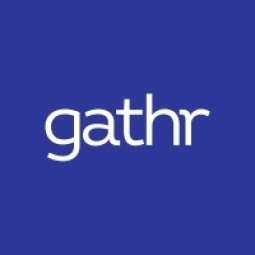
|
An AI-based predictive maintenance analytics solution for a multinational automaker
A Fortune 500 American multinational automaker was seeking a solution to predict faults in their auto parts to proactively ensure fault-free production, thereby saving maintenance time and improving the customer experience. The company faced several challenges. Data was being generated from multiple discrete systems, all of which had to be processed simultaneously to get a complete picture. The data was in different formats like JSON, CSV, and other proprietary formats. The cutting tools had to be replaced before they reached end-of-life, affecting the production quality. Therefore, the automaker was looking for a solution that would predict in real-time, giving them enough time to replace the waned cutting tools. The data collected from multiple systems had several quality issues and missing records. This data had to be formatted, cleansed, and prepared before it could be fed into the predictive analytics models. The manufacturing unit had thousands of machines generating millions of events every minute. The automaker needed to process this massive amount of data in real-time using a single solution and shared infrastructure. Real-time alerts to floor operators and the downstream application was a crucial component. Any failure or delay in these alerts had a direct impact on the quality of parts produced.
|
|
|
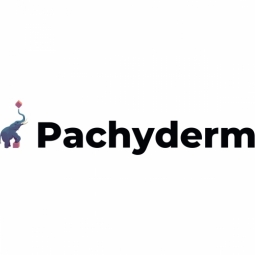
|
RTL Nederlands Relies on Pachyderm’s Scalable, Data-Driven Machine Learning Pipeline to Make Broadcast Video Content More Discoverable
RTL Nederlands, part of Europe’s largest broadcast group, wanted to use artificial intelligence (AI) to make video content more valuable and discoverable for millions of subscribers. The company broadcasts to millions of daily TV viewers, along with delivering streaming content that garners hundreds of millions of monthly views online. One of the key growth metrics for RTL Nederlands is viewership, but optimizing the value and discoverability of video assets is an extremely labor-intensive endeavor. That makes it ripe for automation, and the team applied machine learning to optimize key aspects of its video platform, like creating thumbnails and trailers, picking the right thumbnail for those trailers, and inserting ad content into video streams.
|
|
|
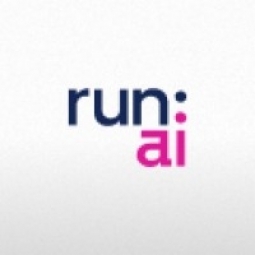
|
Autonomous Vehicle Company Wayve Ends GPU Scheduling ‘Horror’
Wayve, a London-based company developing artificial intelligence software for self-driving cars, was facing a significant challenge with their GPU resources. Their Fleet Learning Loop, a continuous cycle of data collection, curation, training of models, re-simulation, and licensing models before deployment into the fleet, was consuming a large amount of GPU resources. However, despite nearly 100 percent of GPU resources being allocated to researchers, less than 45 percent of resources were utilized. This was due to the fact that GPUs were statically assigned to researchers, meaning when researchers were not using their assigned GPUs others could not access them. This created the illusion that GPUs for model training were at capacity even as many GPUs sat idle.
|
|
|

|
Lenovo Benefits From JDA Short-Term Consulting
Lenovo, a $34 billion personal technology company, was seeking to increase the reporting accuracy and efficiency of the sales-order planned ship date functionality within JDA Factory Planner. The company wanted to automate manual processes to enhance productivity and needed on-site assistance to support their information technology (IT) department in solving key issues. Lenovo operates in more than 160 countries and is dedicated to exceptionally engineered PCs and mobile Internet devices. The company's business is built on product innovation, a highly efficient global supply chain, and strong strategic execution.
|
|
|

|
Creating a Flexible Supply Chain at Western Digital
Western Digital Corporation, a global leader in flash memory storage solutions, was facing challenges with its resource-intensive spreadsheet-based planning process. The process involved four-week planning cycles with only basic planning assumptions. The company wanted a daily integrated supply chain plan that includes demand, material supply and capacity constraints and utilization, allocation and execution objectives. They also wanted visibility into demand and supply across the entire organization, including the inventory in each segment and channel, promotion plans and supply and production plans. Furthermore, they wanted to use customer segmentation and a multilayered postponement strategy to reduce overall inventory levels while better positioning products and materials to support improved customer service.
|
|
|

|
Microsoft Cloud Supply Chain Partners with Blue Yonder to Maximize Service and Reliability
Microsoft manages more than 200 data centers in 34 countries, and it’s adding 50 to 100 new data centers every year. The global supply chain also includes traditional functions such as manufacturing and transportation, provided by third parties. Across this geographically distributed network, Microsoft needs to ensure uninterrupted, high-quality, reliable service. The COVID-19 pandemic revealed the weaknesses in the world’s supply chains, as well as the need for a rapid, coordinated response when the unexpected happens.
|
|
|
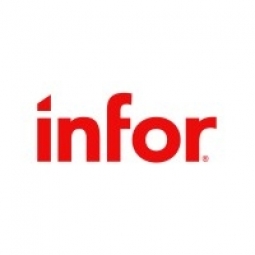
|
True Textiles Weaves Birst Business Analytics into Key Production Processes
True Textiles, a leading manufacturer of commercial textiles, was using a traditional, on-premise Business Intelligence (BI) solution for nearly a decade. While the solution helped to combine the company’s disparate data sources, it was difficult to use, with limited functionality. Its costly licensing model made expansion of the deployment prohibitively expensive, so a small group of administrative and IT users ran reports for the rest of the organization. As additional questions arose, reports were modified and run again in a time-consuming, cumbersome process that reduced employee productivity and slowed decision-making. As their expectations shifted, they began to look for an easy-to-use, self-service solution that would give them quick access to advanced functionality. They needed a solution that could expand beyond their sales department to help them cost-effectively improve performance across the organization.
|
|
|
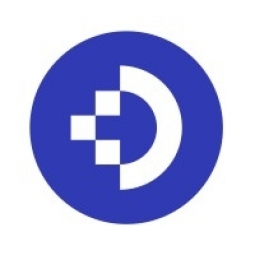
|
BEGO Dental Company: Strength Through Innovation
BEGO, a dental company based in Bremen, Germany, was facing challenges with its document management. The company had to meet strict requirements for production, research, and development, as well as administration and information management. Businesses in the dental sector must satisfy extensive obligations for documentation. BEGO was spending large amounts of time searching for documents and related day-to-day paperwork, especially when customers had follow-up questions. Filing the various documents was quite labor-intensive. They were running out of space for document storage. Inquiries, invoices, delivery notes, and offers were all kept in traditional paper files, and the filing cabinets were overflowing. They were eager to save on the labor and expense that it took to maintain their unwieldy files.
|
|




